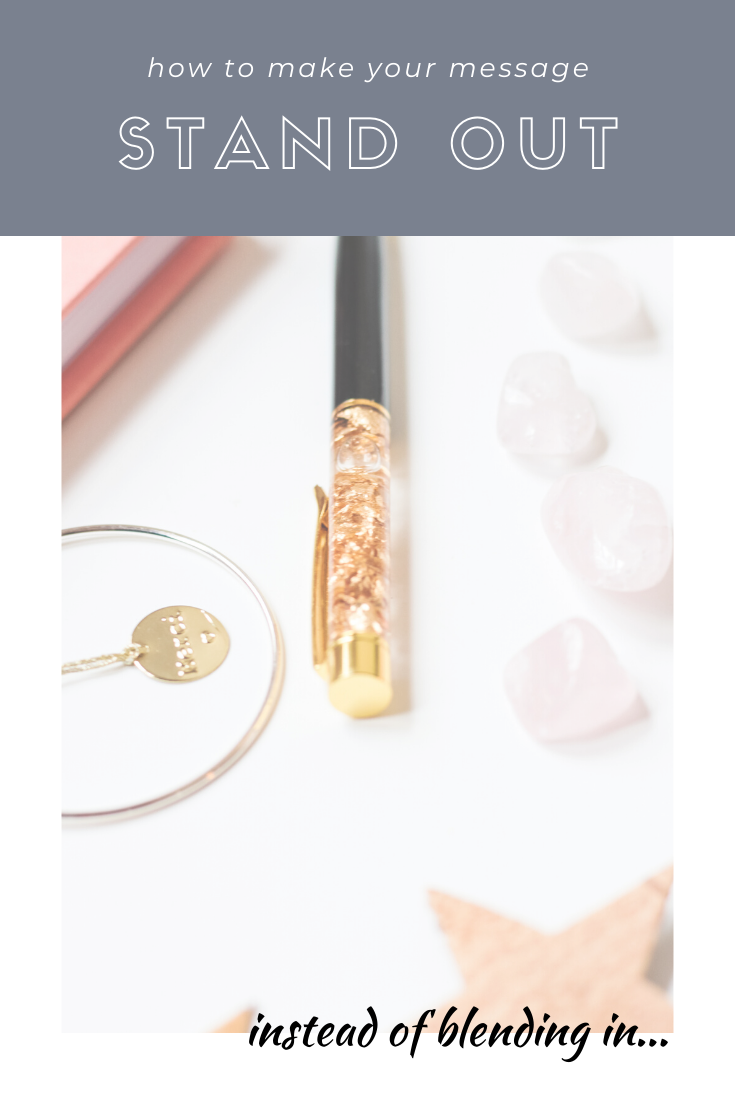“I write valuable blog posts, I post and engage on social media, I go on podcasts, I have a sales funnel set up… so why is no one buying from me?”
That’s a question a lot of my clients come to me with.
Here’s something I’ve learned over the years of working as a copywriter and FB ads specialist…
If your messaging is scattered, your audience won’t stick around for long.
You can pay for ads, go on podcasts every month, and regularly email your list a newsletter filled with valuable content.
But without consistent messaging, no one’s gonna buy from you.
Your audience doesn’t know who you are, what you do, or how they can benefit from the solutions you offer — and nobody makes a purchase without having that info.
Today, I’m going to hand over one of my favorite strategies for ensuring your messaging is consistent.
I call it the Broken Record Test, and it’s an easy way to check in and make sure you’re showing up strong for your readers.
Basically, if it seems like you’re continually sharing the same stuff over and over and you feel like a broken record, then you know you’re on the right track.
Pretty simple, right?
You don’t need a fancy degree or a bajillion more online courses. You just need a solid understanding of who your audience is and how you help them.
THE IDEA BEHIND THE BROKEN RECORD TEST
I came across this strategy while I was trying to explain the importance of consistent messaging.
The truth is, your ideal customer probably has dozens of emails in their inbox, follows tons of people on social media, and is constantly scrolling past ads.
And exactly how many of those emails do you think they really read? What about Instagram captions? FB ads?
Probably only a few, if that.
Which means it’s REALLY important for your messaging to stand out.
Here’s an example…
You know Jenna Kutcher right? You read her insta posts, you click on her stories, and you’d probably recognize one of her captions without seeing who wrote it. You’d just KNOW that it was Jenna who wrote it.
And that’s all because she has her messaging down to a science.
Consistency is so much more powerful than people realize.
HOW TO USE THE BROKEN RECORD TEST
To use the Broken Record Test, you just need crystal clear answers to these 3 questions:
-
What your course or program is about? This one should be easy… what is your offer? How long will it take? Who is it for? You’ll want to narrow this down to a few words, so pick out the details that you think will matter the most.
For example:
-
a 12-week mindset coaching program
-
a 2-hour coaching intensive where we streamline one area of your business
-
a 90-minute live review of your sales page copy
-
-
Why someone can benefit from it. Get super specific here, while still keeping it short and sweet. Focus on one specific problem you solve, and one specific result your offer promises. Your readers aren’t looking for the list of things included with your offer — that comes later. All you need to do now is lay out exactly why your reader should care.
For example:
-
get paying clients fast
-
have accountability so you can actually get stuff done
-
scale your business while spending ample time with your kids and hubby
-
-
How they can buy it? You need to know exactly HOW your ideal client can get started. Do they need to fill out a form or book a consultation? Outline the exact steps your ideal client will take to go from lead to paying customers and try to keep it as streamlined as possible. You may not need to answer this question as often as the other two, but having a thoughtful answer ready will save you valuable time.
3 PLACES TO USE THE BROKEN RECORD TEST
Now that you’ve got defined answers for what your course or program is about, why someone can benefit from it, and what the next steps are, it’s time to start putting them to work!
Here are a few places you can inject your key messages:
-
Website copy: you can generously sprinkle your website copy with headlines, taglines, and a value proposition that lays out exactly what you stand for and why your readers should care.
-
Instagram bio: this is a perfect space to answer those 3 questions. You can split them into 3 bullet points (using your favorite emojis!), or have 1-2 clear sentences.
-
Sales pages: your sales page should walk your ideal client through the journey of going from reader to customer. This is where outlining the next steps is especially important — by laying out exactly what will happen, your readers will be more likely to complete the process and buy your product.
There are a million opportunities for you to be consistent with your messaging. You just have to get a little strategic and have a clear understanding of your audience and what they will find valuable.
I believe in you!


